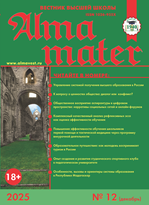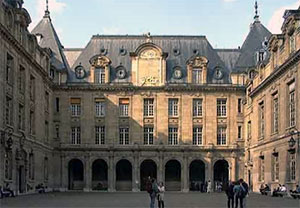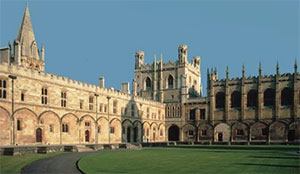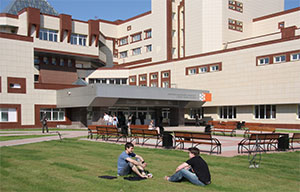Antonina A. Gerasimova, Cand. Sci. (Pedagogy), Docent, Department of Art Processing Materials at Institute of Construction, Architecture, Design and Art, Nosov Magnitogorsk State Technical University, e-mail: antonina73@inbox.ru
Bella L. Kagan-Rosenzweig, Cand. Sci. (Pedagogy), Docent, Department of Art Processing Materials at Institute of Construction, Architecture, Design and Art, Nosov Magnitogorsk State Technical University, e-mail: kagan-bella@mail.ru
Daria A. Karpenko, 1st year master’s degree in Institute of Humanitarian Education, Department of Teacher Education and Document Management, Nosov Magnitogorsk State Technical University, e-mail: dashulya_karpenko@mail.ru
The study reports on the process of training students that are pursuing a bachelor's degree in 54.03.02 “Decorative and applied arts (DAA) and crafts”. Practical application is shown the authors deal with practical use of historical, art history ornamental heritage, theoretical knowledge, principles of ornament design in jewelry design. The paper gives the examples of parti diagrams, projects and works performed in the material using the results of the discipline “Ornament in decorative and applied arts”; during which students learn to make different types of ornaments using knowledge of history and theory of ornaments in the design process of DAA.
Through generalizing the experience of teaching the discipline “Ornament in the products of decorative and applied art”, the study aimed at developing practical work skills; improvement and development of the students’ intellectual and cultural level; culture of project thinking in the field of methods, techniques for processing and decorating metal art products. The aim of the study was also to perform the practical tasks that contribute to the training of specialists who possess not only technology knowledge of artistic metal processing, techniques, design activities, but also independent development of ornamental designs created for a particular type of decorative art and more complete perception of the designed product and the image disclosure.
Keywords: history and theory of ornament, decorative and applied arts, art metal, training of metal artists
References
- Beschastnov, N.P., Kovaleva, O.V., Stor, I.N. (2018). From texture to ornament: traditional and innovative technologies in the construction of modern ornaments of the “shade type”. Decorative art and spatial domain. Vestnik MGHPA, 3 (2), 245-252.
- Gavritskov, S.A., Gerasimova, A.A. & Kagan-Rosenzweig, B.L. (2019). The use of bionic forms in the process of preparing artists of decorative and applied arts. Modern teacher education. 3: 77–80.
- Gerasimova, A.A. (2018). Possibilities of choosing the color of metal in the design of modern jewelry. Alma Mater (Vestnik vysshey shkoly). 10: 113–118.
- Sokolova, M.S., Sokolov, M.V. (2010). Ornament and metal lace of Russian masters. Magnitogorsk: Publishing house of the Moscow State University.
- Sokolova, M.S., Sokolov, M.V. (2016). The growing role of arts and crafts in art education in the period 1980–2000. Philosophy of Education. 4 (67): 159–167.
- Sokolova, M.S. (2017). Ornament in the products of arts and crafts. Novosibirsk: Publishing House of NGPU.
- Makarova, K. (2015). Prospects for the Development of Art Pedagogical Education: The Case of the New Profile “Art of the Book.” Worldwide trends in the development of education and academic research, 15–18 June, 305–317.












.png)






